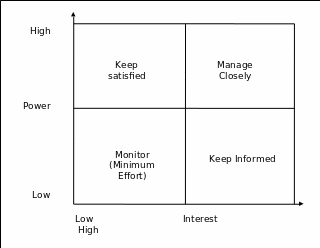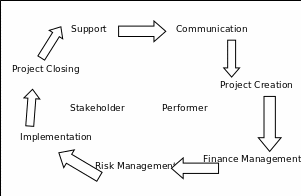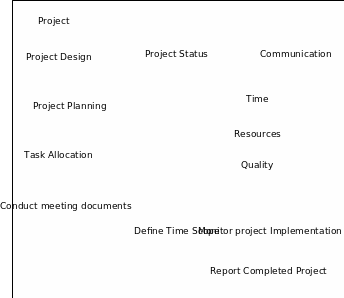Executive Summary
The Dolphin Hotel group is regarded as one of the most challenging projects for the construction company. In fact, the project presupposes the construction of a 5 star quality level hotel with all the required appliances and equipment for the comfortable accommodation of the visitors, and creation of the attractable design. The expected capacities presuppose the comfortable accommodation of 150 visitors, and 20 VIP clients additionally. In fact, it presupposes the construction of 20 LUX rooms additionally.
Technical capacities of the building presuppose the accommodation of technical personnel (up to 30 persons), as well as the construction of technical rooms, for the personnel could store the required instruments.
Project Description
The project is aimed at constructing the hotel building and providing all the necessary capacities for the successful development of the hotel industry. Thus, infrastructure, design and safety are the key elements of the project. Considering the fact, that the final aim is the creation of sufficient accommodation basis in the geographical region, the hotel should consider the aims and purposes of visitors.
The actual necessity of the project creation and development is closely associated with the complexity of the project and the necessity to meet the requirements of the hotel business industry. Originally, this factor defines the magnitude of the opportunity, which is outlined by the requirement to create, adjust, and launch all the systems required for hotel activity.
The aims of the construction company is to conquer the market of hotel building, and position itself as a reliable and trusted partner in the sphere of construction.
Dolphin Hotel Group Objectives are as follows:
- The company aims to increase the portfolio of hotel industry building and improve the generally accepted standards of hotel construction. This is regarded as one of the key aims of the company-performer, however, considering the experience of the company is to gain the reputation of a reliable partner.
- The company aims to create the sufficient customers’ base, and gain the support of reliable stakeholders. This will be required for implementing the large-scale projects, which will promote the company’s growth and development. Additionally, the company aims to meet the growing standards of hotel industry.
- The company wishes to provide high quality accommodation services for the successful development of hotel industry,
Scope of the Project
The scope is generally associated with the necessity to create the system, aimed at providing the high quality accommodation services. Thus, the project will entail the preparation of the territory, and arranging of the required infrastructural decisions. Additionally, the territory preparation will require the solution of legislative issues, and creation of the construction plan. Then, the building will be started, and the development of infrastructural network will be performed along with the construction. The facility will have 150 rooms, and 20 LUX rooms. Additionally, gym, pool, sauna, kitchen, bar and restaurant halls will be required. Technical spaces presuppose the existence of storage rooms, accommodation for technical personnel, and administrative complex. Reception hall, call center and support service will be required during the season peaks, and for helping visitors to use the hotel Wi-Fi services coverage. The project is aimed at attracting tourists by the high quality services, and attractiveness of the building design. Hence, the opportunity to provide high quality services should be resolved during the implementation of “Construction” stage.
Justification of the Project
- Availability of world class accommodation services for the tourists, reduced service prices for services, and high quality services.
- Higher accommodation standards for the tourists will imply better services to the community in general, and hotel industry and networks growth in the country.
- The multiplier effect due to the employment creation and enrollment of international tourists will be a substantial contribution to the country’s economy.
As for the benefits of the construction company, it should be emphasized that the company aims to gain the reputation of a reliable partner, and the actions will be aimed at improving the cooperation with the stakeholders’ group. In fact, the actual aim is the creation of the customers’ base by providing the alternative approach towards the satisfaction of the hotel industry standards. The standards themselves can not be changed, however, the performance of the company may improve the existing standards, and start the new epoch in the sphere of hotel and accommodation.
As for the standards of hospitality and accommodation, it should be emphasized that the key aspects of the successful hospitality performance entail law, an ethic, a principle, a code, a duty, a virtue, etc. The key aspect of the construction company involves the high quality building and projecting of all the necessary conveniences. In accordance with Reiss (143), the following statement should be emphasized:
Yet hospitality as a moral imperative, or ethical perspective, preceded many other prescriptions for ethical behavior: In ancient cultures, the Ethic of Hospitality was a code that demanded specific kinds of conduct from both guests and hosts. In many ways, these standards of behavior have survived into the present day in the commercial hospitality industry, where descendents of the ancient ideas continue to inform current standards and practices.
In the light of this statement, it should be stated that the actual benefits of the performer and stakeholders are explained by the possibility to arrange the mutually advantageous cooperation, and improve the hotel industry in the region, by providing the high quality, five star hotel services.
Roles and Stakeholders
These are the most important roles, which will be crucial for the project implementation.
Project Deliverables
This includes all the tangible and soft components of the project which must be achieved. For our case, the ultimate deliverable is the Dolphin Group facility. In the course of the project, there are other deliverables, which are imperative for the progress of the project. Dolphin Hotel project deliverables are as listed below;
- Equipped hotel building and facilities.
- Architectural plans.
- Ministry of tourism permits.
- Local authority licensing
- Assessment reports by civil and structural engineers.
The final point of the project is the constructed hotel, built in accordance with the commonly accepted standards, and five-star level quality of the services. The deliverables of the project generally entail both included and excluded services. The new services of the project involve the providing of the high quality accommodation services, aimed for tourists and residents. The key aim of these services is to fill market of accommodation and hospitality services, and the aims of the company are to gain the reputation of the reliable partner in the sphere of construction. (Frame, p. 291) The feasibility of these objectives depends on the rules and principles of project performance. In fact, the feasibility of the project should be regarded as the traditional perspective of successful implementation of the project objectives. The new system maintenance should be arranged as a result. This system involves the hospitality and accommodation services, which are the key principles of hotel business success.
Risk Assessment
The origins of risks may be of various natures, and the results of risk may cause the problems of various seriousness. In fact, the main problem, which risks impose, is closely associated with the violation of the initial plan. Thus, these may be the late implementations of the plan stages, poor quality of construction performance, violations in delivery etc. As a result, the entire plan should be changed and restructured. However, proper and detailed risk management may prevent the possible risks, or minimize the consequences.
The hotel building project is regarded as rather sensitive towards risks, and, the risks may be both technological, and human factor related, as well as natural and financial. Consequently, the risk management practices will depend on the prevailing risks and constraints. In accordance with Frame (98), the risk assessment factor should be regarded as the defining point for project planning:
The fundamental difficulty in risk assessment is determining the rate of occurrence since statistical information is not available on all kinds of past incidents. Furthermore, evaluating the severity of the consequences (impact) is often quite difficult for immaterial assets. Asset valuation is another question that needs to be addressed. Thus, best educated opinions and available statistics are the primary sources of information. Nevertheless, risk assessment should produce such information for the management of the organization that the primary risks are easy to understand and that the risk management decisions may be prioritized (Frame, p. 98).
Thus, the possible risks should be analyzed from the perspective of possible losses, and the countermeasures should be adopted. The most common risks for the building construction sphere are as follows:
- Not meeting the standards
- Lack of funds, or bankruptcy of a stakeholder
- Wrong plans, or plans which do not correspond to requirements of the stakeholder’s group
- Violation of the timeframes and deadlines of the project
In fact, the risks and constraints of the project depend on the reliability of the suppliers, and the adequacy of the construction plans. It should be emphasized that the actual importance of the risk assessment and management plan is explained by the actual importance of financial, technological or human factors. The fact is that, the mitigation measures will depend on the actual importance of any factor and the market situation, which characterizes the sphere.
Activity List
The activities involved into the project implementation stage are enlisted in the project file. In fact, all the activities are divided into managerial, preparation, construction, design, and report stages. The importance of each phase is undoubted, however, it should be emphasized that risks may be expected at any stage, and risk management strategies should be implemented from the first step of project implementation.
The resources, and costs, which will be required for the project implementation will be defined in the business planning stage of the project implementation. In fact, these will depend on the actual marketing position and inflation level. Additionally, the financial resources of the stakeholders will matter, as materials may be cheap or expensive.
Additionally, the requirements of the stakeholders should be taken into consideration. In fact, project management principles should be implemented for better performance and with the consideration of strategic planning, resource development or setting the long-term direction for the organization. Moreover, some stakeholders prefer hiring third-party consultants, and, in order to satisfy the needs and interests of the stakeholders, the company-performer will have to persuade the company in necessity or uselessness of the measures and steps, offered by consultants.
Event Analysis
The chain of events, and analysis of the events performed will depend on the variability of customers’ behavior and the changes in the initial plan. In fact, risk management principles will influence the event chain essentially; however, the key principles of chain event analysis will depend on the necessity to maintain the power and interest level within the team of stakeholders. In fact, the higher position of the event chain defines the higher satisfaction level of the stakeholders.

The analysis of event chain in general will depend on the precise definition of the key questions of project implementation:
- What are the financial and other motives and interest, which stakeholders pursue? What is the largest motive?
- What information do they require, and what is the preferred information exchange channel?
- What is their opinion of the performer’s work, and how it may be improved? What information is needed for reputation improvement?
- Whether third-party consultant is able to influence the opinion of the stakeholders
These are the key questions of interest and power, which will define the position in the power / interest grid of communication and prioritization. Thus, the event chain should maintain high interest and power rates. Initially, it will depend on the communication level between stakeholders and company-performer.

Finally, the project management strategy selection presuppose the division of the events required into theoretical and practical sides of the project. From the perspective of this division, the theoretical part will be united into a single block

Resource Allocation
Resource allocation profile will generally depend on the matters of communication and resource positioning within the stakeholders’ group. In fact, the general overview of allocation strategy will be based on the event chain analysis, and the principles of project management. The recommended resource allocation strategy is the decentralized allocation, which will help to accomplish the project in time. However, it requires thorough planning and balanced allocation. Thus, the cost control measures should be implemented. As Frame (253) stated:
Cost control must be introduced when contracting outside the stakeholders’ group. The selection of outside counsel may need to be subject to caps and lump sum contracts Due to limited local law experience and the limited availability of law firms with a strong local practice, ongoing cost control is particularly important in early transition countries.
Thus, the decentralized resource allocation management should have the features of adaptive resource allocation. Thus, the principles, which are going to be implemented, will define the project implementation character. The decentralized adaptive strategy will minimize the creation of bottlenecks during the project implementation, however, cost and resource consumption control tools should be used for the detailed and thorough control. The adaptive feature will presuppose the existence of centralized control in the strategy of decentralized allocation.
The essential problem of resource allocation strategy, which will be faced by the performer is the satisfaction of stakeholders’ interest and the analysis of the financial opportunities of the stakeholders group. In fact, the accommodation industry in general is highly dependent on the matters of resources used, as the precise balance will be required for the proper implementation of the plans, defined in the project scope. Thus, the resource allocation strategy will be information and communication based. However, as Reiss (159) emphasized:
A better approach is to determine prices empirically based on an observation of the network’s behavior at different price points. For example, a system designer can experiment with a test bed deployment or simulation to understand the effect of differing prices on overall behavior. Prices can be readily tuned after deployment, since broadcasting a new price vector to an active network is not expensive. This process could be automated by an external controller that observes the network behavior over time and adjusts prices accordingly.
In the light of this statement, the centralized control principle is regarded as the key step for the accurate and proper resource allocation. The resource leveling principles will be closely associated with the risk analysis, and the prioritization of the tasks, which will be defined on each implementation level.
Conclusion
Hotel building project management principles are closely associated with the implementation of complex projects. Thus, the accommodation and hotel industry define the standards, and the company performer should meet these standards, and fulfill the aims and requirements of the stakeholders. Thus, such factors as risks, allocation of the resources, event chain analysis and justifications play the defining role in the planning and performance stages. The strategies, described in the report were selected from the perspective of better performance and better control opportunities for the stakeholders and managers of the project.
Works Cited
- Frame, J. Davidson. Project Management Competence: Building Key Skills for Individuals, Teams, and Organizations. San Francisco: Jossey-Bass, 2007.
- Reiss, Geoff. Project Management Demystified: Today’s Tools and Techniques. 2nd ed. London: E & FN Spon, 2005.
